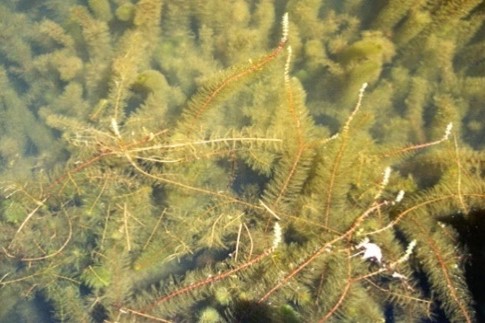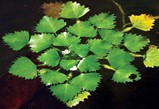
July 2023: Stop the Spread of Aquatic Invasives from the Comfort of Your Boat!
New Hampshire’s environment offers so many possibilities for summer fun, and one of the most popular is recreating in our lakes! This time of year, our lakes are host to an influx of residents and visitors, many of whom like to enjoy the water from the comfort of their boats. One thing we don’t want our lakes to host, however, are aquatic invasive species. Invasives can severely affect the water, our ecosystems, and our ability to enjoy the lakes. When you’re out on your boat this summer, you can support the ecosystem and help stop the spread of invasives by taking a few easy steps when you visit.
What Are Invasive Species Anyway?
Invasive species include any non-native species that can pose direct impacts to the ecological health of an ecosystem. In the case of aquatic species, invasives can also have recreation impacts and prevent people from being able to use or recreate in bodies of water. Invasives are particularly harmful for the environment because they take resources away from native species. They also frequently maintain unique traits that allow them to outcompete native organisms and to not face many predators, which helps them take over entire areas. Without providing a purpose to the ecosystem, invasives directly harm other organisms in the area and can threaten native species.
What Species to Look Out for This Summer
So, what are some aquatic invasive species to look out for in our travels this summer? Many of the invasive species that can spread from one body of water to another include aquatic plant life, such as species of milfoil, fanwort and water chestnut. Variable milfoil is one type of invasive water milfoil that is particularly harmful in New Hampshire. An entire milfoil plant can grow from any of its loose fragments in a body of water, so it’s particularly difficult to remove it from a waterbody. Growing in thick mats, variable milfoil can prevent native plant species from getting necessary nutrients and sunlight, which threatens their growth. Consequently, fewer native plants means that other organisms have less shelter and food resources that they depend on. Reduced native plants can even result in lower levels of dissolved oxygen in water bodies, putting aquatic life like fish in danger. Water chestnut is another invasive plant species that can form in large clusters and masses in waterbodies, which causes similar detrimental effects to ecosystems.

Ways that YOU Can Help!
Now that you know about the dangers of aquatic invasive species, what can you do to help protect New Hampshire’s ecosystems this summer?
Clean, Drain, Dry!
One of the most significant ways to help is by avoiding the spread of any organisms, plants or algae, from one body of water to another. This is especially important for boaters that may be traveling to different lakes, rivers or ponds in the New England area. Protecting the ecosystem is as easy as this: clean, drain, dry!
- Clean off any mud, plants, animals or algae from boats, trailers and equipment.
- Drain your boat and equipment away from the waterbody.
- Dry anything that comes into contact with the water.
Protecting New Hampshire’s ecosystems can be that easy! Taking a few minutes to clean, drain and dry your equipment before and after getting in the water can go a long way to ensure that organisms are not traveling or spreading to different waterbodies in New Hampshire.
Join Weed Watchers
If you want to get more hands-on in protecting our aquatic ecosystems, a great way to do so is by joining NHDES’ Weed Watchers, which is a volunteer program designed to monitor aquatic invasive plants. Weed Watchers survey their specific waterbody once a month from May-September to keep a look out for species of concern. This small amount of time spent surveying an area can help with early detection of invasive species. By detecting a species as early as possible and reporting it to NHDES, you can prevent invasives from further spreading in an ecosystem. Monitoring and keeping an eye out for unwanted organisms goes a long way in protecting out New Hampshire waterbodies. Learn more about getting involved in Weed Watchers!
Educate and Inform Others on Invasive Species
Another great way to protect aquatic ecosystems is by spreading the word and educating others on invasive species. By sharing your knowledge, other people can be aware of what species to look out for in their travels throughout New England.
NHDES is also trying to inform others about the dangers of aquatic invasive species. One way NHDES is doing this is through a new out-of-state boater decal program that requires boaters with vessels registered outside of the state to purchase an invasive species decal. If you or someone you know has a boat from outside of New Hampshire, make sure to have a decal so that we can all be cautious about invasive species. Spreading the message and informing others allows us all to work together to protect not only our environment but also our home. You can find more information about decals, including the links to purchase them on the NHDES website.
Make a Splash for Biodiversity
Now that you know all about the importance of protecting our local ecosystems, you can start your summer fun and travels while also supporting our environment! Protecting local species also helps with reinforcing biodiversity for a healthier and more well-balanced ecosystem. Taking a few moments to stop the spread of invasive species goes a long way!




